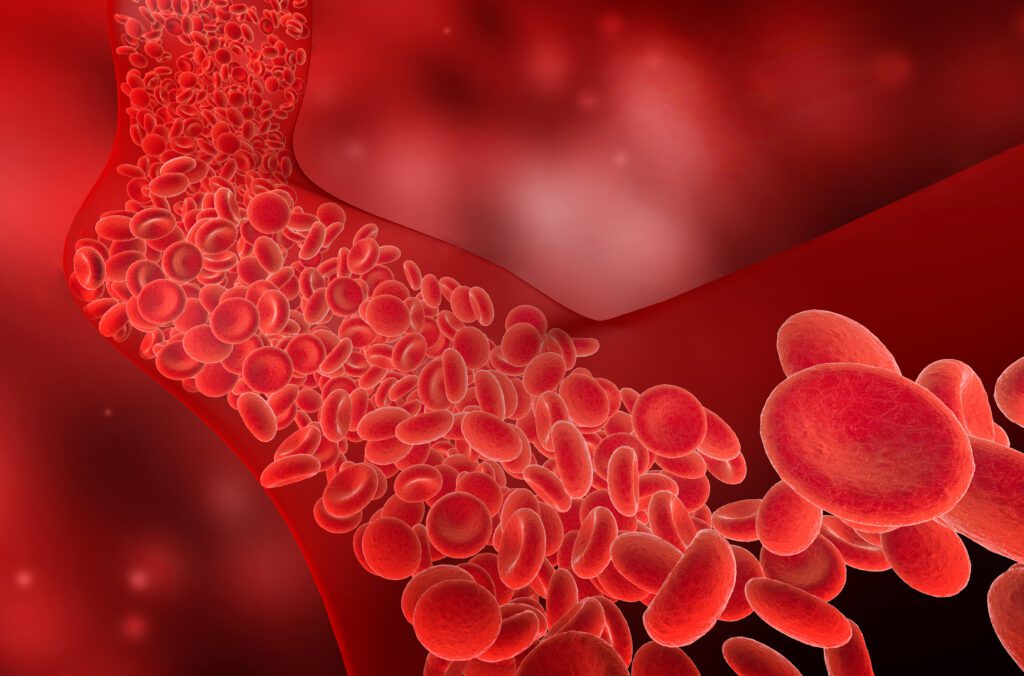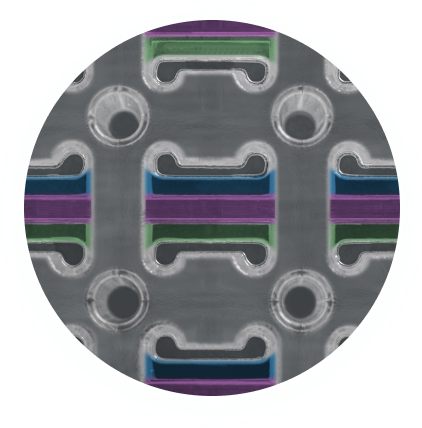Extracorporeal Membrane Oxygenation (ECMO) systems are life-saving technologies that support patients with severe cardiac and respiratory failure by oxygenating blood and removing carbon dioxide externally. At the core of this system is the oxygenator, a device that facilitates gas exchange, functioning as artificial lungs. Despite their critical role, oxygenators face challenges such as thrombosis, biofouling, and hemolysis, which can compromise performance. This article examines the structure and function of oxygenators, their role within the ECMO circuit, and the advancements in surface coatings that address these challenges to improve efficiency and patient outcomes.
Oxygenators in ECMO Systems
The oxygenator is the cornerstone of the ECMO system, mimicking the natural function of the lungs by facilitating the exchange of oxygen and carbon dioxide. It consists of a bundle of hollow fibers made of semi-permeable membranes that separate the blood and gas phases.
- Blood Flow: Deoxygenated blood flows along one side of the membrane, while oxygen-rich gas flows on the other. This arrangement creates a diffusion gradient that drives gas exchange.
- Gas Exchange: Oxygen diffuses into the blood, while carbon dioxide diffuses out into the gas phase for removal. The oxygenated blood is then returned to the patient’s circulation.
- Materials and Design: The hollow fibers in oxygenators are typically made from materials like polypropylene or polymethylpentene, selected for their gas permeability and biocompatibility.
Oxygenators are critical in both venovenous (VV) ECMO, where respiratory support is provided, and venoarterial (VA) ECMO, which supports both respiratory and cardiac functions.
Challenges in Oxygenator Performance
Oxygenators operate under challenging conditions, where prolonged blood contact with artificial surfaces can trigger biological responses. The key challenges include:

Thrombosis:
Platelets can activate and aggregate on the oxygenator’s surfaces, forming clots that reduce gas exchange efficiency and increase the risk of embolism.
Protein Adsorption and Biofouling:
Plasma proteins adhere to the membrane surfaces, forming a fouling layer that obstructs gas diffusion and accelerates performance degradation.
Hemolysis:
High shear forces within the oxygenator can damage red blood cells, releasing free hemoglobin that contributes to oxidative stress and further reduces device efficiency.
Durability and Maintenance:
Over time, membrane fouling, clot formation, and mechanical wear necessitate oxygenator replacement, increasing risks and costs.
These challenges highlight the need for innovative solutions to enhance the performance and longevity of oxygenators within ECMO systems.
Role of Advanced Surface Coatings in Oxygenators
Surface coatings play a critical role in mitigating the challenges faced by oxygenators. Recent advancements in material science have enabled the development of coatings that improve hemocompatibility, reduce fouling, and enhance gas exchange efficiency:
| Hydrophilic Coatings: | These coatings create a hydration layer on the membrane surface, reducing protein and platelet adhesion. This helps maintain clean surfaces and prolongs effective gas exchange. |
| Nitric Oxide (NO)-Releasing Coatings: | By releasing NO, a natural antithrombotic molecule, these coatings prevent platelet aggregation and smooth muscle proliferation, reducing clot formation on the membrane. |
| Camouflage™ Coating: | Camouflage™ works by attracting and retaining a layer of non-inflammatory proteins from the patient’s blood on the device surface – camouflaging the surface and reducing the progression towards clotting. |
| Zwitterionic Coatings: | These charge-neutral coatings repel proteins and cells, reducing fouling and ensuring that membrane surfaces remain functional over extended use. |
| Antimicrobial Coatings: | These coatings inhibit microbial colonization and biofilm formation, reducing infection risks and maintaining oxygenator performance. |
Impact of Coatings on Oxygenator Efficiency
The application of advanced surface coatings significantly enhances oxygenator performance:
Improved Biocompatibility: Coatings prevent platelet activation and protein deposition, reducing the risk of thrombosis and fouling.
Enhanced Gas Exchange: By maintaining clean membrane surfaces, coatings preserve the diffusion gradients necessary for efficient oxygenation and carbon dioxide removal.
Extended Longevity: Durable coatings resist wear and fouling, ensuring stable operation during prolonged ECMO runs.
Reduced Complications: Anti-thrombogenic and anti-fouling properties minimize the need for oxygenator replacement, improving patient safety.
Integration with the ECMO System
Oxygenators are part of a complex ECMO circuit that includes pumps, cannulae, heat exchangers, and monitoring devices. The efficient operation of oxygenators is essential for the overall success of the system:
- In VV ECMO: Oxygenators provide critical respiratory support by oxygenating blood and removing carbon dioxide before returning it to the venous system.
- In VA ECMO: Oxygenated blood is delivered to the arterial circulation, supporting both cardiac and respiratory function.
Advanced coatings improve the integration of oxygenators with the ECMO system by minimizing interactions between blood and artificial surfaces, enhancing overall system reliability and patient outcomes.
Oxygenators are indispensable in ECMO systems, providing life-saving support for patients with severe cardiopulmonary failure. However, their interaction with blood poses significant challenges, including thrombosis, biofouling, and hemolysis. Advanced surface coatings offer a transformative solution, optimizing gas exchange efficiency and extending device lifespan.
Smart Reactors’ Camouflage™ technology exemplifies these innovations, combining biomimetic design with anti-fouling and hemocompatible properties to set new benchmarks for oxygenator performance.
For more information on our advanced solutions for ECMO applications, Contact us.
Share this post: on LinkedIn

